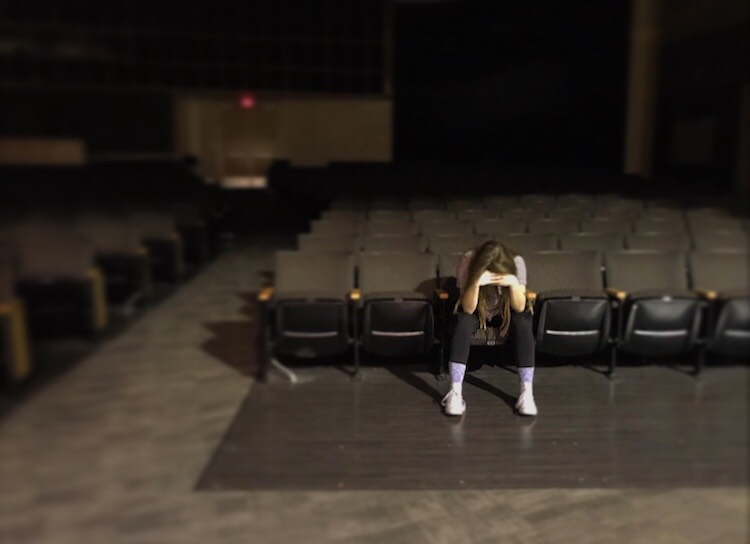The school’s approach to dealing with mental health is the right idea headed down the wrong road
Each day, many students sit in the perfectly aligned rows in their metal desks, confined to a stunted, impersonal space. Each day, many students shovel information into their minds, attempting to perfectly accomplish the epithet of a “good student.” Each day, many students are faced head-on with the weight of education, something that can be crushing at times due to the unfathomable workload.
Yet, people ask why the number of people who are experiencing mental health issues on some level has risen in recent years and continues to rise now.
Schools are unfortunately a natural breeding ground for issues regarding mental health, such as anxiety, stress, and more. Students’ confrontations with mental health issues are often inevitable in these years due to the pressure of social life, school work, and entering early adulthood, and schools are consequently left responsible to address these issues.
Many wonder if this topic of discussion is being handled properly in schools, but there isn’t necessarily one answer or solution. On some levels, it is being efficiently handled, more than most places, at least, but this issue is often inadequately dealt with.
It seems that every adult associated with the process of talking about mental health at the school, whether it is a counselor or an administrator, can rattle off an exact list of approaches that the staff is taking to facilitate students’ knowledge of mental health, while also having resources open for kids who may need to seek help.
However, numerous students confidently claim that the school is not sufficiently handling students’ mental health.
This vast disparity of opinion should be a red light, signaling how the school handles this mental health “crisis” may sound productive in theory but may not suitable for the students.
How the school is confronting mental health is salient in some aspects. Once or twice a year, the student body may gather in the auditorium for an assembly regarding mental health and how to manage it. Counselors are assigned to students, and social workers are helping around the district. But many students still find this insufficient.
To say that the school is insufficiently handling this issue may be a slight stretch; the school’s work with dealing with students’ mental health is more characterized by the right idea heading down the wrong road.
Educating and informing students does help in lessening stigma and simply starting a conversation about the topic at hand, but it is also handled impersonally in the school. During an assembly with a crowd full of students who are most likely tired, sitting with their friends, and more interested in what’s happening elsewhere, it can be difficult to fully grasp students’ attention and send a potent message.
The assemblies are also frequently filled with information that most students already know, ultimately making it repetitive and seemingly unnecessary.
This impersonal approach to dealing with how to educate students about their minds is most likely due to the fact that there are too many students for counselors to know and connect with on a closer level. Therefore, mental health should instead be addressed in smaller groups, through activities or simply in the classroom.
This generic attempt of dealing with students’ mental health also stretches into the counseling office. This is not an attack on counselors, as what they are doing for the school is positive work; however, many students admit that having their name dwindled to an online Google Form rather than being able to talk to a counselor in person has left them feeling neglected and insignificant.
The school isn’t necessarily the only place where a blanket approach is taking action. This stretches outside of the school walls, as well, and this may be why the school also focuses on mental health this way. Almost every informational article or conversation is muddled with statistics, narrowing millions of people down into a number, a percent.
It’s easier to talk about people and work with issues of mental health in this manner. But people aren’t percents, nor are they Google Forms or simply another generic factor that has to be dealt with.
Large assemblies are a good start, but the school should begin to focus on this topic more closely with students. This discussion about mental health is a personal topic and should thus be handled personally and up-close.
Even with the relatively large number of students in the school, with enough help from administrators or teachers, mental health can be addressed to the students in order to lessen the stigma surrounding it and increase awareness of the fact that seeking help shouldn’t be feared.
Although school and all it comes with often naturally engender mental health issues, there is still room to nurture the issue at hand, but it should be handled effectively because schools are a main factor that impacts a student’s life. There are few other times when students will be able to openly learn about mental health unless they visit a professional; therefore, it is important for teachers and counselors to address this now, when they can.
There will be few other moments for students to be reminded that people cannot be placed perfectly into a box and that they are not merely numbers or statistics. Although this is somewhat common sense, it helps to be reassured that people are simply people, and people sometimes need help.
